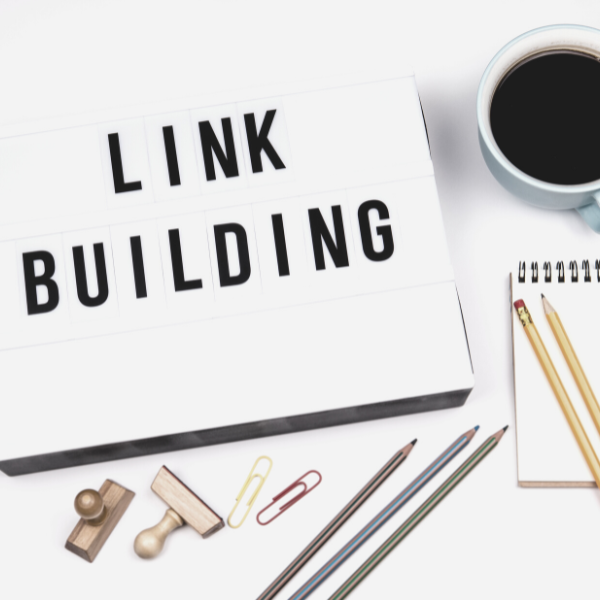These 7 steps will boost your blog’s SEO.
If you’re looking to increase traffic to your blog, improving your search engine optimization (SEO) is a must. Fortunately, there are some simple steps you can take to start building your blog’s SEO and driving more traffic to your site. Here are seven steps to get you started.
Conduct Keyword Research.

Once you have a list of keywords, include them in your blog’s content, titles, meta descriptions, and URLs to improve your chances of ranking higher in search engine results pages (SERPs).

Optimize Your Blog’s Title Tags and Meta Descriptions.
What is a title tag?
It’s the main headline that appears on search engine results pages (SERPs). The title should reflect the content of your blog post. Go for a short title tag (between 50-60 characters) that includes your target keyword.
What is the Meta Description?
It’s a brief summary of your blog post that appears below the title tag in SERPs. It should be between 150-160 characters long and also include your target keyword. Keep it brief and compelling.
Our advice:
- Write a title that will grab your readers’ attention and make them want to click through.
- Your meta description should be memorable, and descriptive, but not overly long.


Create High-Quality, Relevant Content.
- Focus on a specific topic or keyword and provide value to your readers.
- Use headings and subheadings to break up your content and make it easier to read.
- Go for longer-form content (at least 1,000 words) as it tends to perform better in search engine rankings.
- Finally, make sure your content is updated regularly to keep it fresh and relevant.
Build quality backlinks and Use internal linking.
- Improve your domain authority
- Raise your search engine rankings
- Increase traffic


Improve site speed.
A slow-loading site can have a bad impact on your SEO. To improve your site’s performance, we recommend Google PageSpeed Insights. This tool will help you find areas for improvement.
For example, you might discover that your site has more images than necessary, or that the image size isn’t optimized for speed. Pages with lots of different fonts should also be avoided as this can lead to crawl errors.
Social media is one of the best ways to connect with customers and gain awareness.
Share your blog posts on social media platforms like Facebook, Twitter, or Instagram.
You’ll reach your target audience and drive traffic to your site.


Monitor and track your results.
- Drive growth
- Understand your customers
- Improve your website
Dare to Create.
These 7 steps will boost your blog’s SEO.
If you’re looking to increase traffic to your blog, improving your search engine optimization (SEO) is a must. Fortunately, there are some simple steps you can take to start building your blog’s SEO and driving more traffic to your site. Here are seven steps to get you started.
Conduct Keyword Research.

Once you have a list of keywords, include them in your blog’s content, titles, meta descriptions, and URLs to improve your chances of ranking higher in search engine results pages (SERPs).
Optimize Your Blog’s Title Tags and Meta Descriptions.

What is a title tag?
It’s the main headline that appears on search engine results pages (SERPs). The title should reflect the content of your blog post. Go for a short title tag (between 50-60 characters) that includes your target keyword.
What is the Meta Description?
It’s a brief summary of your blog post that appears below the title tag in SERPs. Between 150-160 characters long, it also should include your target keyword. Keep it brief and compelling.

Our advice:
- Write a title that will grab your readers’ attention and make them want to click through.
- Your meta description should be memorable, and descriptive, but not overly long.
Create High-Quality, Relevant Content.

- Focus on a specific topic or keyword and provide value to your readers.
- Use headings and subheadings to break up your content and make it easier to read.
- Go for longer-form content (at least 1,000 words) as it tends to perform better in search engine rankings.
- Finally, make sure your content is updated regularly to keep it fresh and relevant.
Build quality backlinks and Use internal linking.

- Improve your domain authority
- Raise your search engine rankings
- Increase traffic
Improve site speed.

A slow-loading site can have a bad impact on your SEO. To improve your site’s performance, we recommend Google PageSpeed Insights. This tool will help you find areas for improvement.
For example, you might discover that your site has more images than necessary, or that the image size isn’t optimized for speed. Pages with lots of different fonts should also be avoided as this can lead to crawl errors.

Social media is one of the best ways to connect with customers and gain awareness.
Share your blog posts on social media platforms like Facebook, Twitter, or Instagram.
You’ll reach your target audience and drive traffic to your site.
Monitor and track your results.

- Drive growth
- Understand your customers
- Improve your website

